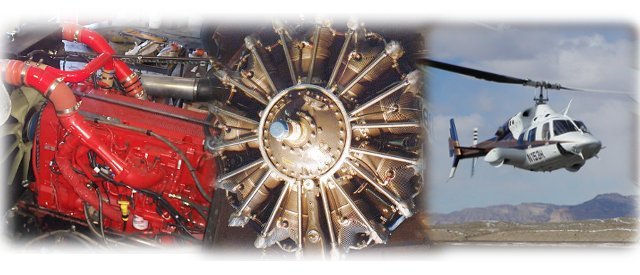
At center stage above
is a Pratt & Whitney R1340-AN1, 600 hp
takeoff rated. I installed it on the
left wing of a Grumman Mallard amphibian
scheduled passenger carrier in 1980, and 3 months later it ended up on the
bottom of the ocean off Avalon, California because of a non fatal pilot
error accident. Above left is a Cummins ISX
530 that I repowered a Peterbilt 359 with in 2006, a truly great engine.
At right
is a Bell Helicopter Textron 222B powered by problematic twin
Textron Lycoming LTS101-750C3
gas turbine turboshaft engines rated at 743 shaft horsepower each in a 245 lb
package. The machine was fast with a 170 mph
cruise speed.
During the teething period of the LTS101 engines in the 1980's, we
averaged 140 hours between engine removals on this and other aircraft
with the same power source.
A never ending stream of corporate and engineering level mistakes
plagued the engine
throughout the eighties, leaving customers
frustrated and disappointed. The engine has since
matured to reliability but a bad reputation is difficult to
overcome.